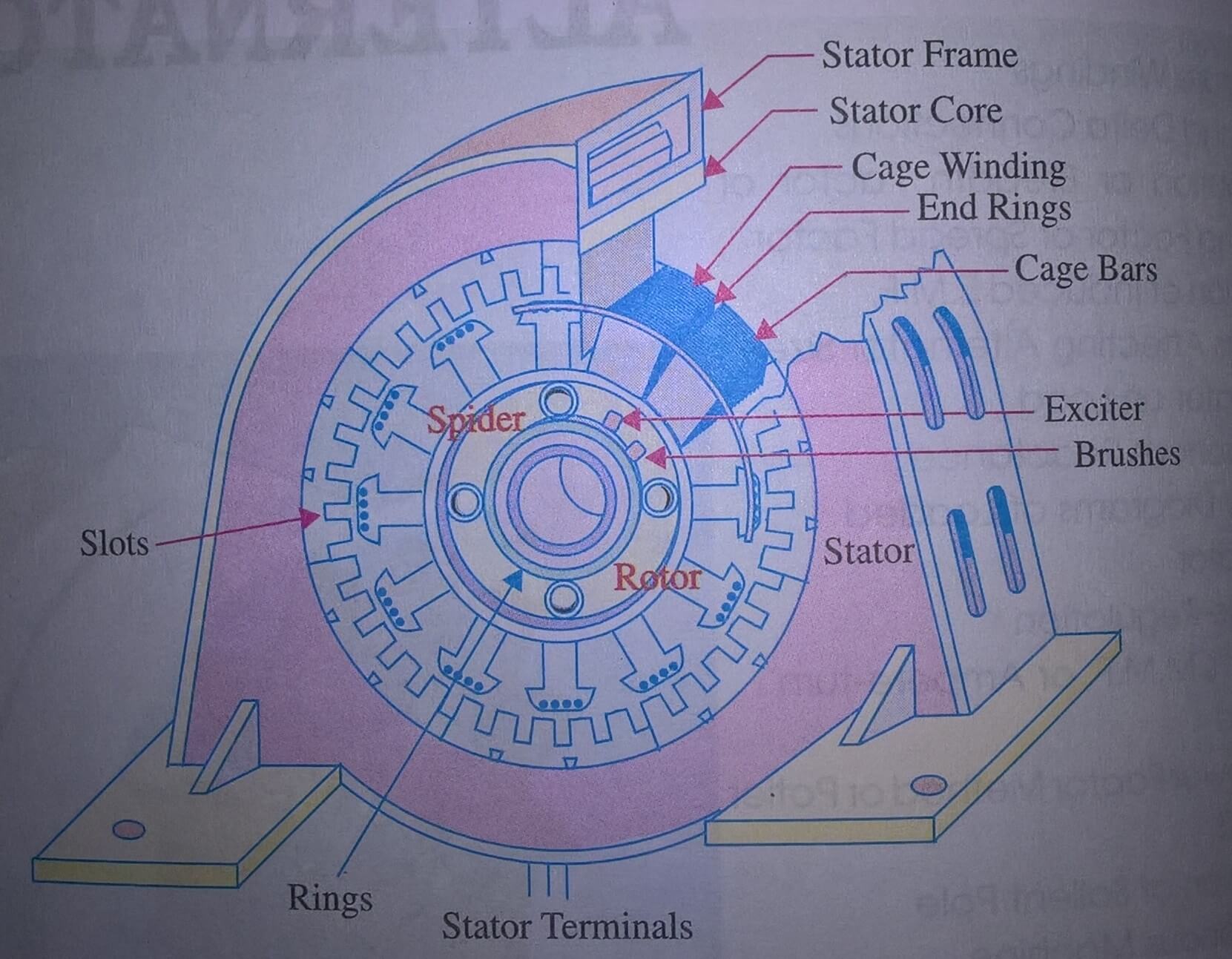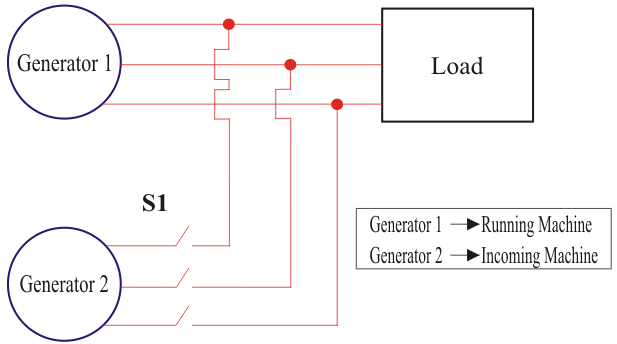What is an AC Generator? The basic principle of an alternator / AC generator and a DC generator is almost the same. However, there is one significant difference. AC and DC generators consist of an armature winding and a magnetic field. In a DC generator, the armature rotates while the field system remains stationary, whereas in the case of an alternator, the opposite is true.
Table of Contents

What is an AC Generator / Alternator?
An alternator is also known as an AC generator. As mentioned earlier, AC generators and DC generators are quite similar 

Alternator is a device that converts mechanical energy into electrical energy.
In an alternator, the armature remains stationary and the field is rotated with the help of a prime mover. This rotating magnetic field or flux cuts through the armature conductors, inducing AC EMF in the conductors, which is then supplied to the load current through slip rings.
Some Words about Alternator
An alternator primarily operates with field, armature, and exciter. The exciter creates a magnetic field in the field winding. When the field is rotated, the magnetic field cuts through the conductor windings on the armature core, generating AC EMF in the conductors through the principle of electromagnetic induction as described by Faraday.

What is Voltage Regulation of an Alternator and its Equation?
The voltage regulation of an alternator is calculated by dividing the difference between the no-load voltage and full-load voltage by the full-load voltage and expressing it as a percentage.
In other words, Voltage Regulation = [(No Load Voltage – Full Load Voltage)/Full Load Voltage] * 100
% Voltage Regulation = (VN.L – VF.L) / VF.L * 100
What Losses Occur in an Alternator?
Losses in an alternator include:
- Core Losses: These are further divided into 1) Eddy Current Losses and 2) Hysteresis Losses
- Copper Losses: These are divided into 1) Armature Copper Losses and 2) Field Copper Losses
- Stray Load Losses
- Air Friction Losses / Brush Friction Losses
Conditions for Parallel Operation of Alternators

- Terminal voltages must be the same
- Polarity must be the same
- Phase sequence must be the same
- The speed of the alternators must be such that all frequencies are the same.
Methods for Determining the Voltage Regulation of an Alternator
- Synchronous Impedance Method
- Zero Power Factor or Petter’s Method
- Amper-Turn Method
- Old AIEF Method
What is Synchronizing and What is its Purpose?
Synchronizing
When the circuit load increases, a single alternator cannot meet the increased demand. In such cases, synchronizing two or more alternators in parallel operation increases the production capacity to meet the additional load demand.
Purpose
- To achieve maximum efficiency
- To ensure continuous operation
- For maintenance and overhauling
- To handle future increased loads
What is Synchronizing Current and Synchronizing Power?
Synchronizing Current
When two alternators operate in parallel and one alternator’s speed decreases slightly, the other alternator produces some extra current in addition to its load current. This current flows through the bus bars and enters the armature of the first machine. This current is known as synchronizing current.
Synchronizing Power
Due to the synchronizing current, some electrical power from the second alternator is transferred to the first alternator, increasing its speed. Simultaneously, the speed of the second machine decreases slightly to provide the additional power. This way, both machines continue to operate in parallel. The electrical power transferred from the second machine to the first is known as synchronizing power.
What is Hunting in an Alternator and What are the Methods to Eliminate it?
Hunting in an Alternator
When two alternators are running in parallel, their terminal voltages are the same. If, for some reason, one alternator’s voltage drops momentarily, the voltage of the other machine increases instantaneously, and current flows into the machine with lower voltage, causing hunting in the alternator.
Hunting can also occur if the alternator’s frequency slightly decreases or increases.
Methods to Eliminate Hunting
- Using damper windings.
- Using a heavy flywheel.
- Using a governor on the prime mover.
Advantages of Keeping the Armature Stationary and Rotating the Field in an Alternator
- The armature winding is much more complex than the field winding, so it is advantageous to keep the armature stationary rather than rotating it.
- The armature winding has a greater number of conductors, making it large and heavy. Rotating it requires a large prime mover. Hence, the stator or armature is kept stationary.
- It is easier to provide ventilation for the rotating field winding compared to the stationary armature.
- In alternators, insulation of the armature is more straightforward than that of the rotating field winding.
Use of Alternators
Alternators are widely used in:
- Power stations
- Electric trains
- Diesel engines
- Hydroelectric plants
- Automobiles
- Aircrafts
We got What is an AC generator, or alternator, is crucial in modern power systems for its efficiency and effectiveness in generating electrical power. It is used extensively in various fields, from transportation to power generation, demonstrating its versatility and reliability in providing electricity.



